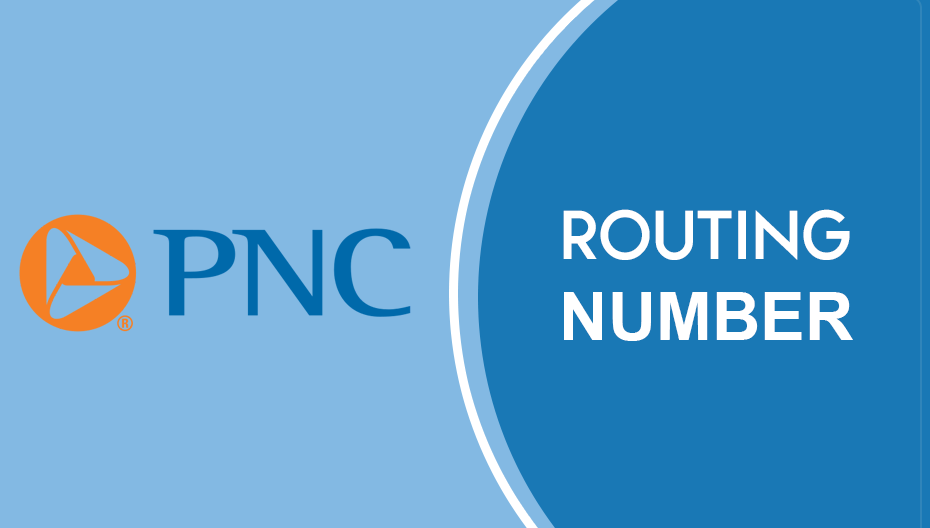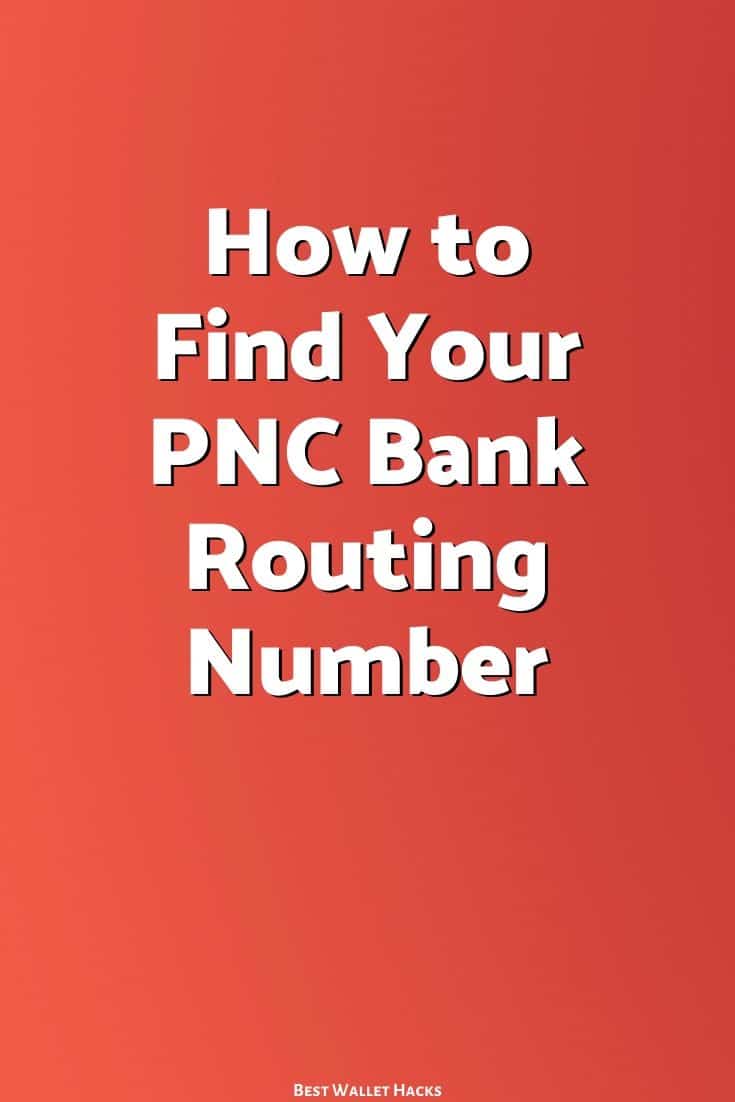So, you’ve got a PNC check in your hand, and now you’re wondering where the heck that routing number is hiding. Don’t worry, my friend, you’re not alone! The routing number on a check is one of those little details that can feel like a treasure hunt if you’re not familiar with it. But fear not—we’re here to break it down for you in the simplest way possible. Whether you’re setting up direct deposit, paying bills online, or transferring money, knowing how to locate your routing number is crucial.
Let’s face it, when life gets busy, figuring out banking details can feel like an extra chore. But trust me, once you know where to look, finding your routing number on a PNC check becomes second nature. And hey, who doesn’t love feeling like a banking pro? In this article, we’ll walk you through everything you need to know about routing numbers and how to locate them on your PNC checks. So grab a cup of coffee, sit back, and let’s dive in!
Before we get started, let’s talk about why this little number is such a big deal. Your routing number is essentially your bank’s address in the financial world. It helps ensure that your money ends up in the right place, whether you’re sending it or receiving it. Think of it as the GPS for your funds—it’s not optional, it’s essential. Now, let’s roll up our sleeves and tackle this step by step!
What is a Routing Number Anyway?
Alright, let’s start with the basics. A routing number is a nine-digit code that identifies your bank or credit union. For PNC Bank, this number is specific to the branch where your account was opened. It’s kind of like a fingerprint for your bank—it ensures that your transactions are routed to the correct location. Without it, your money could end up in the wrong place, which is no fun for anyone.
Here’s the kicker: every bank has its own set of routing numbers, and they can vary depending on where you opened your account. For example, if you opened your PNC account in Pennsylvania, your routing number might be different from someone who opened theirs in Ohio. That’s why it’s super important to double-check your specific routing number before making any transactions.
Why Do You Need the Routing Number on a Check?
Now that we know what a routing number is, let’s talk about why it’s so important. Whether you’re setting up direct deposit, paying bills online, or transferring money between accounts, your routing number is a key piece of the puzzle. Without it, these transactions simply won’t work. It’s like trying to send a package without a return address—it’s just not going to happen.
Here’s a quick rundown of some common situations where you’ll need your routing number:
- Setting up direct deposit for your paycheck
- Transferring money between banks
- Paying bills online or through automatic payments
- Writing checks for large purchases
- Opening a new account at another financial institution
Where to Find the Routing Number on a PNC Check
Alright, let’s get down to business. If you’ve got a PNC check in front of you, the routing number is actually pretty easy to find. It’s the first set of numbers on the bottom left-hand corner of the check. You’ll see a series of numbers printed in magnetic ink, and the first nine digits are your routing number. Simple, right?
Here’s a little tip: the routing number is always the first set of numbers on the bottom of the check. After that, you’ll see your account number, followed by the check number. So if you’re ever unsure, just remember this order: routing number, account number, check number. Easy peasy!
What if I Don’t Have a Check?
Not everyone carries checks around these days, and that’s totally fine. If you don’t have a physical check handy, there are still plenty of ways to find your routing number. You can check your PNC online banking account, download a voided check from your account portal, or even call PNC customer service for assistance. Plus, PNC’s website has a handy routing number lookup tool that can help you find the right number based on your account location.
Understanding the Different Types of Routing Numbers
Here’s something you might not know: PNC Bank actually has different routing numbers for different types of transactions. For example, the routing number you use for wire transfers might be different from the one you use for ACH transactions. Confusing, right? But don’t worry, we’ve got you covered.
Here’s a quick breakdown of the different types of routing numbers you might encounter:
- ACH Routing Number: Used for electronic transfers like direct deposit and bill payments.
- Wire Transfer Routing Number: Used for domestic and international wire transfers.
- International Routing Number: Used for transfers to accounts outside the United States.
Pro tip: Always double-check which routing number you need for the specific transaction you’re making. Mixing them up can cause delays or even result in your transaction being rejected.
How to Verify Your Routing Number
Now that you’ve found your routing number, it’s a good idea to double-check it before using it for any transactions. After all, accuracy is key when it comes to banking. One of the easiest ways to verify your routing number is by logging into your PNC online banking account. Your routing number should be clearly listed under your account details.
Another option is to call PNC customer service and ask them to confirm your routing number. They’ll be happy to help, and it’s always better to be safe than sorry. Plus, if you’re ever unsure about anything related to your account, reaching out to customer service is always a smart move.
What Happens if I Use the Wrong Routing Number?
Using the wrong routing number can cause a whole host of problems. Your transaction might be delayed, returned, or even rejected altogether. In some cases, you might even incur fees for using the wrong number. That’s why it’s so important to double-check before hitting that “send” button.
Here’s a real-life example: let’s say you’re setting up direct deposit for your paycheck, but you accidentally use the wire transfer routing number instead of the ACH routing number. Your employer might not be able to process the payment, and you could end up waiting longer to get paid. Not ideal, right?
Tips for Keeping Your Routing Number Safe
While your routing number isn’t as sensitive as your account number or Social Security number, it’s still important to keep it safe. Sharing your routing number with the wrong person could potentially lead to fraudulent activity. Here are a few tips for keeping your routing number secure:
- Only share your routing number with trusted individuals or organizations.
- Be cautious when sharing your routing number online—make sure the website is secure.
- Shred any documents that contain your routing number before throwing them away.
- Monitor your account regularly for any suspicious activity.
Remember, staying vigilant is key when it comes to protecting your financial information. It’s always better to err on the side of caution.
Common Mistakes to Avoid When Using Routing Numbers
Let’s talk about some common mistakes people make when using routing numbers. The first one is pretty obvious: using the wrong routing number for the wrong type of transaction. As we mentioned earlier, mixing up ACH and wire transfer routing numbers can cause major headaches. Always double-check which number you need before proceeding.
Another common mistake is not verifying the routing number before using it. It’s easy to assume that the number on your check is the right one, but mistakes happen. Taking a few extra minutes to confirm your routing number can save you a lot of trouble down the line.
How to Avoid Routing Number Errors
Here are a few simple tips to help you avoid routing number errors:
- Always double-check the routing number before using it.
- Verify the routing number with your bank or online account portal.
- Keep a record of your routing number in a safe place for future reference.
- Ask your bank for clarification if you’re ever unsure about which routing number to use.
By following these tips, you can minimize the risk of routing number errors and ensure that your transactions go smoothly every time.
Conclusion: Mastering Your Routing Number on a PNC Check
And there you have it—a comprehensive guide to finding and using your routing number on a PNC check. Whether you’re setting up direct deposit, paying bills online, or transferring money, knowing how to locate your routing number is an essential skill. And hey, now you’re a pro at it!
Remember, accuracy is key when it comes to routing numbers. Always double-check before using them, and don’t hesitate to reach out to PNC customer service if you have any questions. Your financial well-being is worth the extra effort.
So, what are you waiting for? Go ahead and share this article with your friends and family. Who knows, you might just save someone from a routing number headache. And while you’re at it, why not check out some of our other articles on personal finance? Your wallet will thank you!
Table of Contents
- What is a Routing Number Anyway?
- Why Do You Need the Routing Number on a Check?
- Where to Find the Routing Number on a PNC Check
- What if I Don’t Have a Check?
- Understanding the Different Types of Routing Numbers
- How to Verify Your Routing Number
- What Happens if I Use the Wrong Routing Number?
- Tips for Keeping Your Routing Number Safe
- Common Mistakes to Avoid When Using Routing Numbers
- How to Avoid Routing Number Errors


